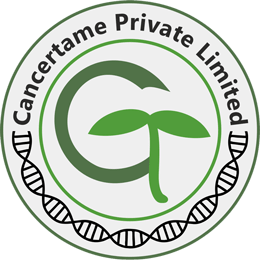Contact Us
Other Articles
2. What is Chemotherapy?
3. What is Radiotherapy?
4. Role of Ayurveda in Cancer Treatment
5. Genesis of Cancer
6. Early Detection of Cancer
7. Diet, Nutrition & Cancer
8. Tobacco Smoking & Cancer
9. Conventional Treatment of Cancer
10. Soft Tissue Sarcoma
11. Mesothelioma
12. Skin Cancer
13. Bone Cancer
14. Leukaemia
15. Chronic Lymphocytic Leukaemia (CLL)
16. Chronic Myelogenous Leukaemia (CML)
17. Acute Lymphocytic Leukaemia (ALL) & Acute Non-Lymphocytic Leukaemias (ANLL)
18. Acute Myelogenous Leukaemia (AML)
19. Lymphoma
20. Multiple Myeloma
21. Breast Cancer
22. Prostate Cancer
23. Oral Cancer (Carcinoma of the Cheek, Lips & Tongue)
24. Carcinoma of the Salivary Gland
25. Carcinoma of the Paranasal Sinus
26. Carcinoma of Pharynx (Oropharynx, Nasopharynx and Hypopharynx)
27. Carcinoma of the Larynx
28. Brain & Spinal Cord Tumours
29. Primary Tumours of the Brain
30. Metastases in the Brain
31. Carcinoma of the Oesophagus
32. Thyroid Cancer
33. Bronchogenic Carcinoma (Lung Cancer)
34. Secondary Cancers of the Lung
35. Carcinoma of the Stomach
36. Liver Cancer
37. Gallbladder & Biliary Tract Cancer
38. Pancreatic Cancer
39. Kidney Cancer (Renal Cell Carcinoma and Nephroblastoma)
40. Urinary Tract (Transitional Cell Carcinoma) & Bladder Cancer
41. Carcinoma of Colon & Rectum
42. Primary Tumours of the Testis
43. Ovarian Cancer (Stromal, Germ Cell and Krukenberg's Tumour)
44. Carcinoma of Uterus
45. Cervix Cancer
46. Paediatric Cancers
47. AIDS Related Cancers
48. Carcinoma of Unknown Primary Site (CUPS)
49. Role of Nutrition in Cancer Treatment
50. Chinese Medicine in Cancer Treatment
Soft tissue sarcoma arises from the connective tissue (the tissue that supports, connects and surrounds different organs in the body) including the muscle, tendon, fat, blood vessel, nerve, fibrous tissue and the synovial tissue. Soft tissue sarcoma usually affects limbs and limb girdles. Exposure to radiation is considered as the major causative factor of the soft tissue sarcoma. Soft tissue sarcoma may develop even many years after exposure to the radiation. Chemical carcinogens (such as herbicides, pesticides and food preservatives) may also cause soft tissue sarcoma. Sometimes, neurofibromatosis transforms into the soft tissue sarcoma. It has been observed that soft tissue sarcoma grows fairly large in size by the time of diagnosis. Soft tissue sarcoma usually remains asymptomatic during early stages of the disease. The symptoms of soft tissue sarcoma vary depending on site and size of the tumour. Soft tissue sarcoma usually metastasizes to the lungs.
Staging of the soft tissue sarcoma is done as follows:
- In stage I, the malignant cells of soft tissue sarcoma look slightly different from the normal cells.
- In stage II, the malignant cells look quite different from the normal cells.
- In stage III, the malignant cells are very much different from the normal cells.
- In stage IV-A, the tumour involves the lymph nodes.
- In stage IV-B, the soft tissue sarcoma metastasizes to distant parts of the body.
- Recurrent soft tissue sarcoma is the one that reappears after an apparent recovery in response to the initial treatment.
Procedures used to diagnose the soft tissue sarcoma include xerography, arteriography, ultrasound, CT scan, MRI and biopsy.
Disclaimer:
This content is for information and educational purposes only and should not be perceived as medical advice. Please consult a certified medical or healthcare professional before making any decision regarding your health using the content above.
Click here to go back to the list of all Articles
Add New Comment
-
 Avni Rana
Avni Rana
My mom is suffering with stage 4 she has head and neck cancer i wanted to enquire about the treatment options plz help me Cancertame Private Limited
Cancertame Private Limited
Dear Avni Rana, Cancertame should be taken in a recommended dose of 2 capsules, 3 times a day, 8 hours apart (2-2-2), in Stage IV Head & Neck Cancer, as a palliative treatment only. Cancertame usually takes about 3 months to arrest the further progression of cancer and thereafter starts regressing the size & activity of cancer and will help provide a prolonged quality life in your mother's case. For any other information, you can write us back at support@cancertame.com Regards, Support Team
24 Sep 2020 -
 Syed Khalid
Syed Khalid
My daughter is suffering with stage 4 high risk rms cancer. wanted to enquire about the treatment option Cancertame Private Limited
Cancertame Private Limited
Dear Syed Khalid, Cancertame should be taken in a recommended dose of 2 capsules, 3 times a day, 8 hours apart (2-2-2), in your daughter's case of Stage 4 Rhabdomyosarcoma (RMS), as a palliative treatment only. Cancertame usually takes about 3 months to arrest the further progression of cancer and thereafter starts regressing the size & activity of cancer and will help provide a prolonged quality life in your daughter's case. For any other information, you can write us back at support@cancertame.com Regards, Support Team
08 Sep 2020 -
 Somesh Basu
Somesh Basu
Hi team, my friend has been diagnosed with stage-iv ewing sarcoma. it started near the right shoulder with a tumor and now it has spread into the lungs. can this be treated? if yes, please help guide me through... Cancertame Private Limited
Cancertame Private Limited
Mr. Somesh Basu, Your query has been replied to by our support team on the Email ID provided by you, for any other query you can write us back at support@cancertame.com Regards, Support Team
09 Jul 2019



Soft Tissue Sarcoma